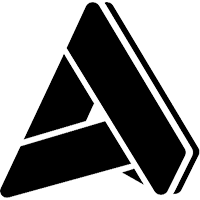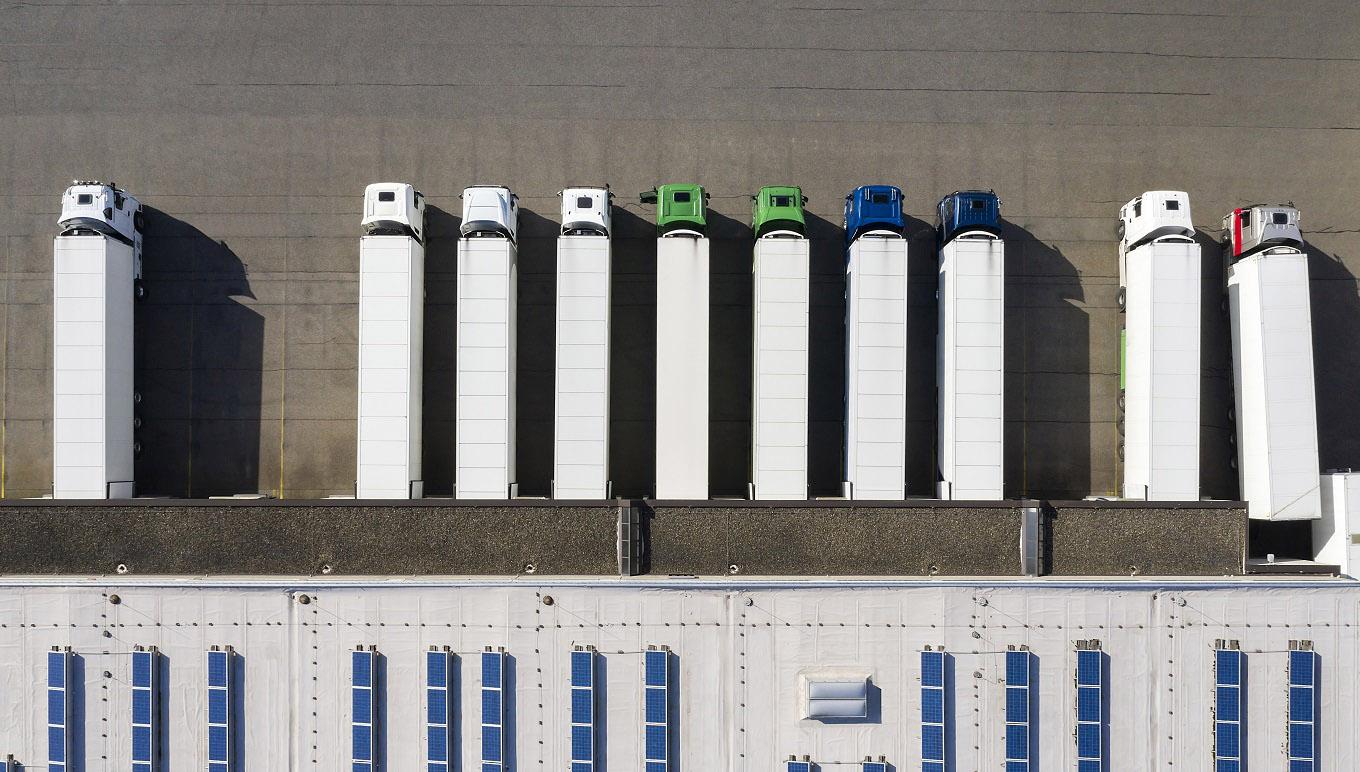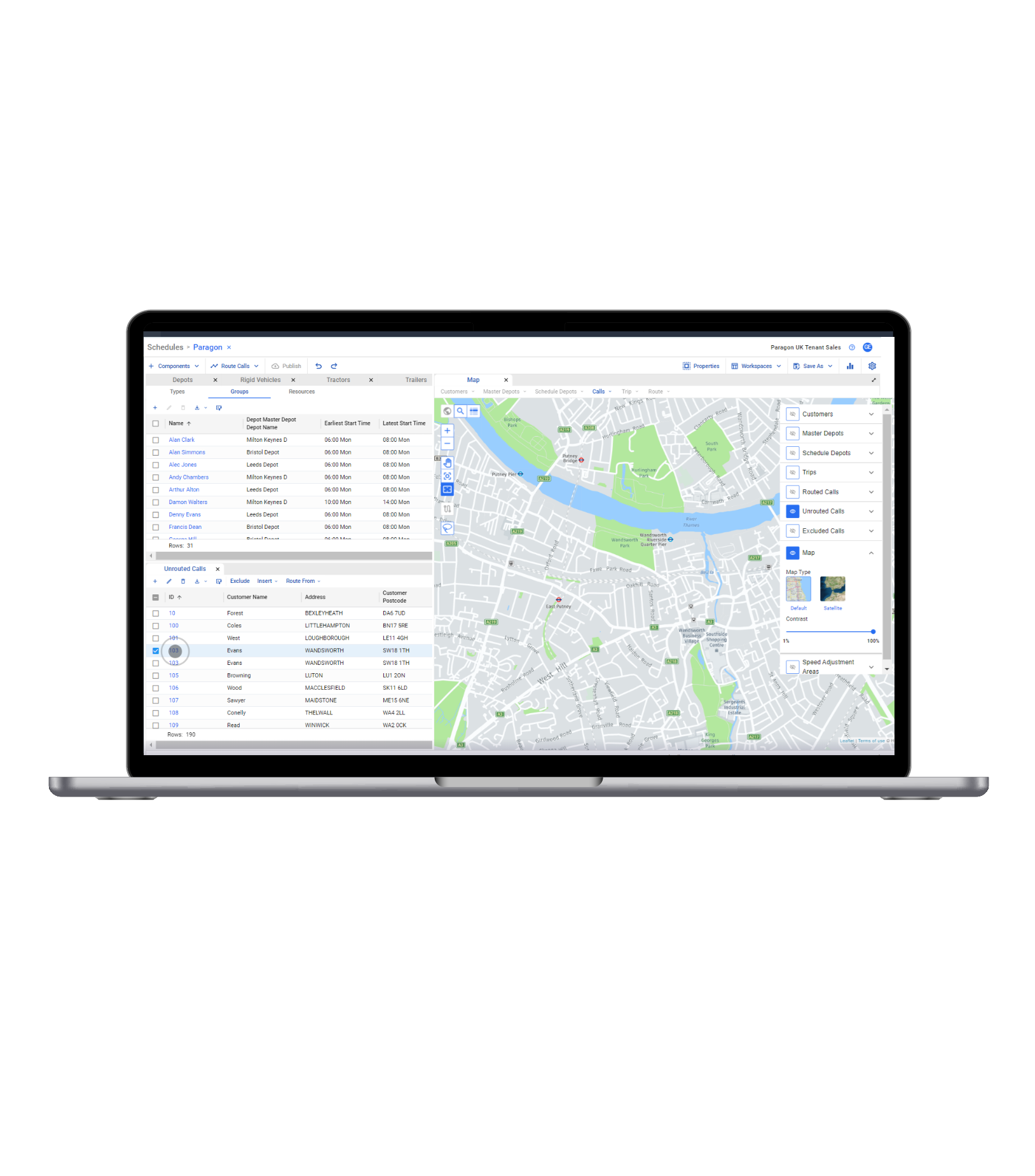Destacado en este post
Mastering Logistics Complexity With Transport Management Software
Mastering Logistics Complexity With Transport Management Software
12 May 2023
 Aptean Staff Writer
Aptean Staff Writer 
If logistics is the art of finding the most efficient way of moving goods to meet service requirements, then the need for a sophisticated approach to transportation optimization has never been more critical as increasing complexity makes efficiency harder and harder to attain.
Thankfully, by harnessing all the benefits of the latest logistics management software you can enhance operational productivity, improve efficiency and gain a competitive edge.
But, before we get started, let's briefly dive into the challenges facing the industry today and the opportunities that technology can provide to master your transportation operations.
The Logistics Challenge
The model for road transportation and distribution has changed radically. And the pace of change isn’t slowing down any time soon.
Not too long ago the typical transportation journey was either point to point – a full load from a manufacturer or distributor to a factory, wholesaler or distributor – or, a regular circuit of collections and drops. An experienced transportation manager or savvy driver could plan a reasonably efficient set of routes that was achievable and practical.
But the requirements that transportation operations face today are much more complex. The expectations of both businesses and consumers have evolved beyond recognition:
Factories and other businesses increasingly operate to lean and just-in-time principles.
Organizations require smaller consignments more frequently—often within very tight time windows and strict schedules.
Consumers expect to have orders delivered at their convenience.
The sheer variety of goods available, their places of origin and their channels to market have increased significantly.
As a result, delivery schedules need to cope with pick-ups from multiple sources and delivery to multiple destinations. These may be in combinations that vary trip-by-trip, or involve both unloading deliveries and picking up ‘back loads’ simultaneously.
There are rules and regulations in place that affect everything from driver hours and conditions to environmental performance and restrictions on permitted times for deliveries. Add to that an increasingly congested road network, rising operating costs and driver shortages and your operational performance becomes less than predictable.
It’s no longer feasible to expect even the most skilled and experienced planners to manually devise effective routes and schedules. Instead, you must look to logistics technology to help manage the complexities of your transportation operation and expand then differentiate in the competitive market you operate in.
Logistics Technology Turns Complexity Into Opportunity
Logistics networks have become more complex, with integrated operations combining fleets and movements to minimize fleet sizes, mileage and empty running—and the transportation industry’s ability to embrace change and use technology to eliminate complexities has never been so important.
Third party logistics (3PL) companies, for example, have introduced new ways of managing distribution with route optimization software to maximize efficiency, reduce costs and improve service. And facilities like distribution centers and methods such as cross-docking and ‘hub and spoke’ have been introduced to streamline operations.
Competition in logistics has helped change transportation and distribution from a cost center to being a differentiator and a source of competitive advantage. Many logistics operators have invested in facilities and advanced transportation software—like telematics and tracking—to manage complexity.
The technology you need to maximize your existing assets, drive efficiencies and save money is accessible and right at your fingertips.
For the remainder of this blog, we'll explore just how logistics technology can turn complexity into opportunity and the benefits you can expect to achieve with transport management software.
1. Planning More Efficient Routes
While our desire for efficiency has seen complexity advancing relentlessly, the over-riding objective of cost-efficient operational excellence hasn't changed. Customer research shows that reducing overall transportation costs is still a major objective year-on-year.
Early routing systems were limited to planning deliveries from a single depot. But as logistics infrastructures have become more sophisticated, so too have the planning systems meaning route optimization software solutions are purpose-built to tackle the nuances of today's industry with ease.
Significant advancements have seen the addition of new functionalities, including:
Multi-tripping
Overnight runs
Weekly scheduling
Routes combining deliveries
Collections and transfers
Street-level routing
Central planning of multi-depot operations
Full “integrated fleets” optimization, with its increased back-loading and reduced empty running
The functionality available today should reflect and complement any existing business operation rather than inhibit it or forcing an operator to change the way they do business when implementing the software.
Investing in advanced route planning software, allows your operation to scale up while managing costs in order to optimize route schedules for even the most complex supply chains.
From transportation offices in small regional-led operations to some of the world’s leading retailers—all have achieved significant cost reductions by taking advantage of what is now considered standard functionality in route optimization software.
Whether you’re moving from manual planning to an automated system or looking to upgrade to a more advanced platform, the principle is the same. More intelligent routing and scheduling means that deliveries can be structured more efficiently, with lower total mileage, better vehicle fill and improved driver/vehicle utilization, and in less time than before. All of which means lower costs.
2. Maximizing and Retaining Drivers
Drivers are a vital asset. Perhaps your most vital asset.
While it’s possible to hire an extra truck at short notice, the same is not true of experienced staff. Achieving the greatest productivity from the available pool of drivers is essential, but managing drivers isn’t just about maximizing the available team.
Not only do most countries now have strict legislation concerning driver hours and rest periods, in many countries there is also a growing shortage of qualified drivers.
Attracting and recruiting new drivers is obviously a key objective, but it can be challenging given the hassle of congestion, roadwork, delays at border crossings or factory gates, and often tenuous hours. Therefore, keeping your current drivers happy should be a top priority. And to retain good drivers, routes and schedules need to be fair and reflect realistic, achievable targets.
Transportation businesses need to maximize driver activity and create a full and fair day plan that reflects likely congestion, the reality of delivery windows and the time taken for ancillary tasks.
In addition to adhering to driver regulations, it will be favorable for driver retention—and retaining good, permanent drivers is a must for operational stability and reliability.
So how does advanced route optimization software cope with the diversity of driver-related regulations and constraints?
Fortunately for today’s operators, driver hours legislation has been present in the U.S. for a while, so the most advanced route optimization systems have implemented these types of limitations into their algorithms.
While different countries may have different rules, these will be simple data changes for today’s advanced transportation management systems. Equally, factors such as congestion are not new, and these are well catered for by the leading systems—all of which enable realistic route planning that maximizes the drivers you have while providing them with full and predictable workloads.
In addition to sophisticated routing systems, additional technology can be deployed to improve the driver experience while maximizing productivity. For example, among the many benefits of electronic proof of delivery software logistics operations are able to implement smoother and quicker field processes—making daily tasks easier for your drivers from the depot to the doorstep. Not only do these simplified processes make driver responsibilities easier, but the increased speed and automated guidance improve productivity and ensure compliance for you.
3. Managing All Vehicle Resources
Trucks, tractors and trailers are an equally important part of your operation. Expensive to buy and operate, this is an area of operations where route planning systems can significantly help by maximizing utilization and improving return on investment.
As mandatory regulations and legislation increase, so do vehicle-related costs. Resource management optimization is not a simple exercise, but it’s a necessity.
Vehicles may be multi-shifted, trailers exchanged during a tractor route and drivers may be only trained and licensed to operate certain vehicles. Furthermore, only particular trailers or heavy-duty trucks may be suitable for specific trips, for example, if they require temperature control.
As your business evolves, the combination of vehicles and drivers may become more complicated. For example, you may want to schedule different resource types against different time frames. A driver can only work a certain number of hours per day, while a tractor unit can, apart from maintenance, work 24/7. Meanwhile, the availability of a trailer or a heavy-duty truck depends on depot loading and unloading times.
That's a lot of complexity. Thankfully, today’s sophisticated transport management systems can take the hassle out of planning. For example, advanced routing systems can arrange for one tractor to be driven by a succession of drivers, hauling several different trailers, in a 24-hour period.
This resource managed planning technique enables the optimization of multi-shifted schedules with drivers, tractors and trailers swapping throughout the schedule—giving you the operational efficiency and cost savings you’re looking for.
Aptean Routing & Scheduling, Paragon Edition is the technology you need to maximize your existing assets, drive efficiencies and save money.
4. Dealing With Legal Requirements, Simply
The transportation industry operates under increasingly strict regulations—ranging from driver hours to emission standards, as well as restrictions on where and when certain vehicles can operate. These regulations complicate the routing and scheduling equation.
For example, in Europe, the introduction of the Euro 6 standard makes it imperative to optimize compliant vehicles. Some vehicles may need special equipment to comply with these regulations.
In the U.S., Tier 2 and 3 and CA LEV II & III standards for vehicles are even more restrictive, which must be considered when planning transportation routes. From London to New York and Shanghai, many urban areas operate combinations of congestion charges and outright bans on deliveries in peak daytime periods.
To complicate matters further, suburban areas may also have bans on evening deliveries, placing more restrictions on the route schedules.
The London Lorry Control Scheme dictates which roads may or may not be used during evening hours to counter noise pollution, especially during the early morning. This was previously a peak period for supermarket deliveries.
Many U.S. cities have their own restrictive policies about delivery times, and as cities become denser with population, these restrictions are likely to become more prevalent.
This area of time-related truck routing constraints is a headache for logistics operators and route optimization systems. As it has been for the past decade.
Why? Because it exponentially increases the number of potential journeys that need to be calculated, making the quest for an optimal manual solution in a reasonably short time frame impossible.
If a transportation operation regularly plans deliveries in dense urban areas, then trying to do this efficiently – in terms of planning time and use of drivers and trucks – will be a familiar challenge.
Route optimization software can now manage the extra dimension of time-related restrictions. This enables planners to build compliant routes cutting the time spent on manual planning, minimizing the impact of schemes like the London Lorry Control Scheme and major public events on routing and scheduling, and lowering the risk of incurring penalty fines.
5. Combining Choice, Convenience and Profitability
If your operation tailors to business-to-consumer (B2C) deliveries, the need to use technology to maximize resource efficiency has never been greater. The expectations for effective B2C delivery, to homes, or to other drop points, within ever more tightly defined timeslots, increase relentlessly as consumers demand ever greater convenience.
But there is another complexity at play here—the customer’s demand for choice.
That is, choice not just about when to receive the delivery, but also where. It could be their home, their office, a pick-up point or a store using a click and collect service. Same-day deliveries with one-hour time slots are also fast becoming the norm with retailers like Argos in the UK with its FastTrack service or Amazon and its one-hour delivery offerings.
Transportation Optimization Dovetails With Extreme Customer Service Requirements
While early home delivery transportation planning was always done as a batch process, today’s advanced home delivery fulfillment systems have route optimization embedded within the order-taking process.
This enables the optimized route schedules to be built in real time as orders come in, and it allows the customer to be offered narrow time windows that can be routed efficiently with other deliveries.
This means that while the consumer is placing their order, they can be offered a choice of time windows, which you can then confidently fulfill.
When greater choice is combined with customer self-service online or via SMS, the ability to proactively update the customer throughout the order fulfillment process and streamlined on-site service with mobile proof of delivery software, it's possible to achieve the best of both worlds—efficient logistics and superb customer service.
6. Managing the Future
As big cities become more congested, central government and local authorities are keen to identify new ways of cutting down on the number of vehicles converging in these densely populated areas.
In London and Singapore, for example, vehicle entry fees have been introduced, while elsewhere, authorities are suggesting deliveries should be consolidated.
This involves bringing loads into out-of-town centers where they can be combined to make the most efficient use of resources and the least environmental impact—regardless of the shipper’s and recipient’s identities. Understandably there is some commercial resistance to this idea.
There are several ways in which consolidation could be employed. There is a local approach. This could involve bringing goods from a peripheral base into all the shops in a major retail mall, with a single vehicle fleet working for all the retailers. Alternatively, vehicles used for home delivery during the daytime and early evening might be repurposed for late night deliveries to shops.
A core benefit of consolidation planning is reducing empty running by introducing backloads beyond those of conventional returns, warehouse carts and packaging to the depot. This means picking up other loads for varying destinations on a plausible route. That would require easy partnering commercially and integration systemically between many partners – from retailers and suppliers to transportation and logistics companies.
Where consolidation involves merging similar city-bound delivery operations, via out-of-town consolidation centers, there are substantial financial and environmental benefits to be had. Increased drop density yields greater productivity, reduced overall fleet size, reduced overall mileage and less harmful emissions.
Once the consolidation network has been decided, the result is just another logistics operation to plan and optimize. These are generally no more complex than some of the dedicated operations already developed by the 3PLs and other industry leaders—and equally can be managed and optimized by advanced route planning technology. The difficulty, in this case, is not the logistics technology required to drive it, but the level of cooperation needed by the different parties involved to make it work in practice.
While it is important to anticipate every legislative change, most are debated for years before they are implemented. That's why Aptean's transport management software solutions help get you Ready for What’s Next, Now®.
Are You Ready to Master Logistics Complexities?
Transportation and logistics operations are intrinsically complex. They must be to meet the changing needs and demands of their customers.
But now, you can master your logistics complexities. And in the process, gain a competitive advantage. It's not only possible to reduce costs and improve the efficiencies of operations, but also cut the time, effort and cost of planning.
Choosing logistics management software with a proven track record in responding to industry and customer needs will ensure that transportation businesses, like yours, can take such changes in stride.
By making the best use of new technology, your transportation operation can be a real service differentiator to supporting and driving the business strategy.
Wherever you are on your logistics journey, you can benefit from further savings and efficiencies. Get in touch with Aptean today to discover how, now.
You can also take a look at our transport management systems which include:
¿Probó el recorrido por el producto y está listo para ponerse en marcha?
Reserve su demostración completa con nuestro equipo hoy para ver cómo nuestro software de enrutamiento avanzado puede ayudarlo a acelerar el rendimiento.



